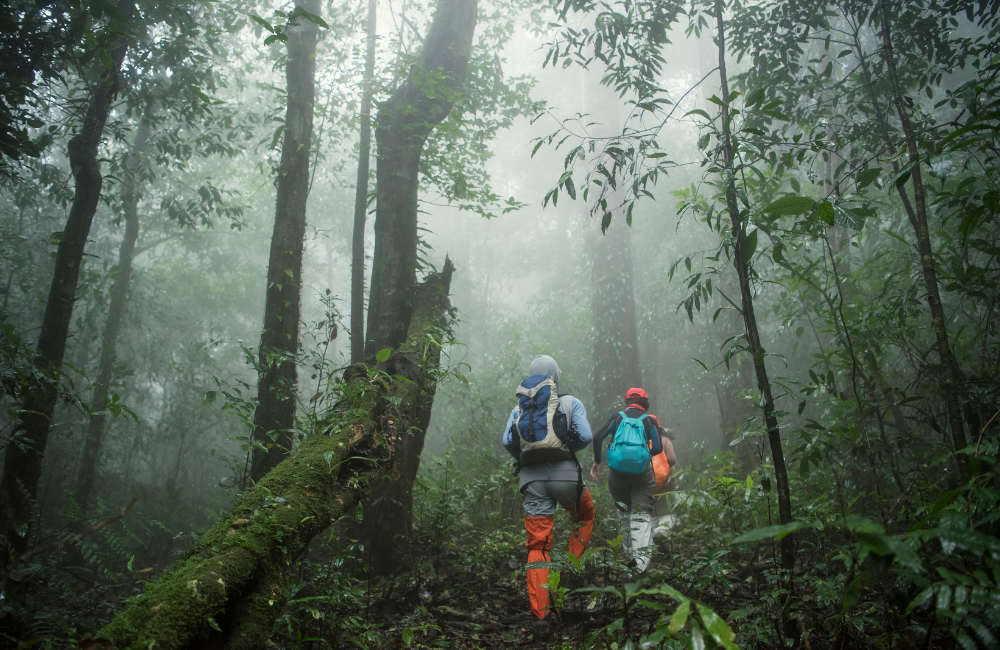Looking for a no-nonsense rainforest hiking packing list? You’re in the right place!
Over the years, I’ve learned that successful rainforest treks demand far more careful planning than a standard hill walk: from coping with unpredictable downpours to navigating muddy, root-laden trails.
In this post, I’ll share the essential gear, safety considerations, and insider tips that have kept me comfortable and secure on countless rainforest adventures.
Ready? Let’s roll.
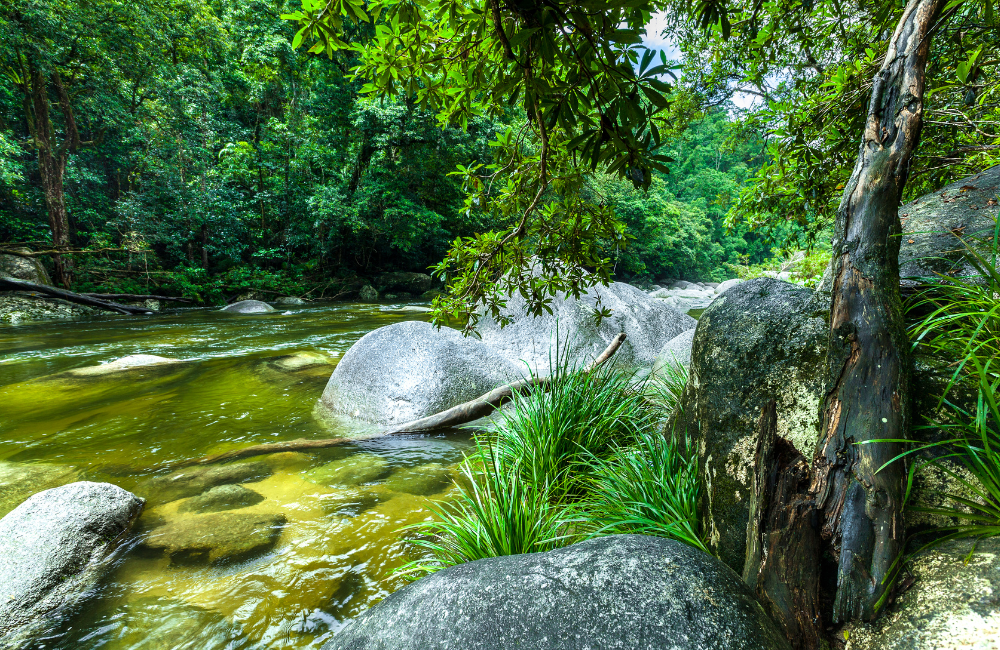
Essential Rainforest Hiking Clothing
Let’s start with the basics: clothing.
Moisture-Wicking Base Layers
In my experience, the first thing to go in a rainforest is cotton. Cotton simply holds moisture, becomes heavy, and leads to chafing.
Instead, I choose moisture-wicking base layers made from synthetic fibres or merino wool. These fabrics draw sweat away from the skin and dry quickly.
For longer hikes, I carry two base-layer sets so I can swap into a fresh top at lunchtime if morning dew and sweat have drenched my shirt.
Merino wool has the added benefit of resisting odours, which is helpful when you’re several days from a laundry point.
Quick-Dry Hiking Pants and Shorts
I always pack quick-dry hiking trousers with articulated knees and zip-off legs. Why? Because this gives me flexibility when sunlight breaks through the canopy at midday heat.
Look for lightweight nylon or polyester blends with a DWR (Durable Water Repellent) finish: they shed light rain and brush aside slaps from low-hanging branches.
A pair with reinforced knees and seat can take the wear and tear of rugged trails. For truly soggy sections, I keep a spare set of trousers in a dry bag, so I’m never completely soaked from hip to ankle.
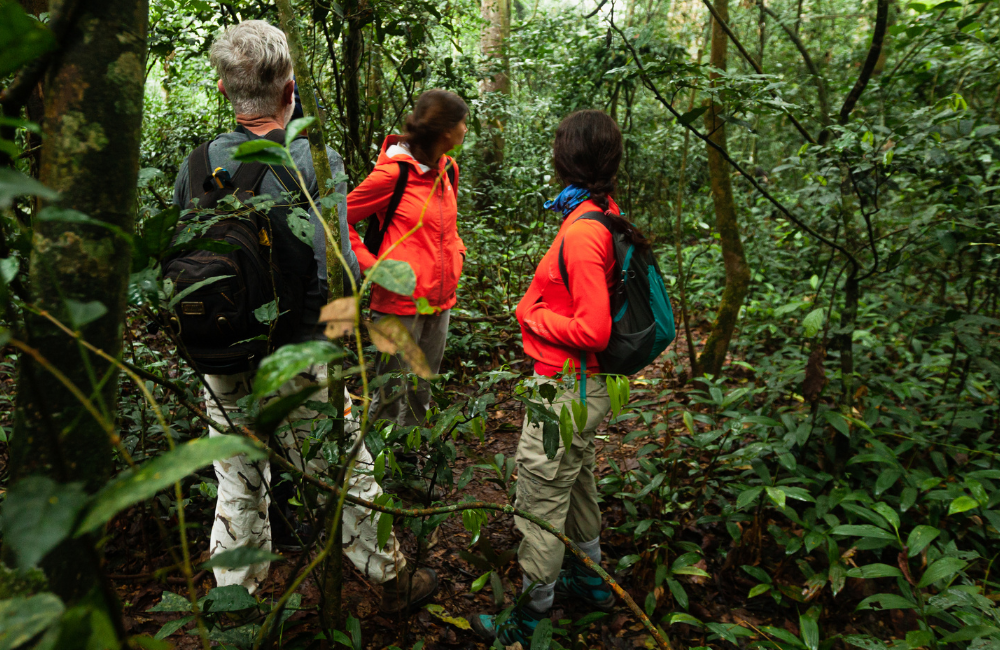
Breathable Rain Jacket and Overtrousers
Choosing the right jacket can be very complicated as the material can vary significantly.
A fully seam-sealed waterproof jacket with pit zips is the cornerstone of my rainforest attire. I favour jackets with adjustable hoods that can be cinched tight around my face in a downpour.
Because humidity is so high, ventilation zips under the arms or at the chest are essential. Otherwise, you’ll end up perspiring inside your raincoat as soon as you break into a hike.
Pair the jacket with lightweight waterproof overtrousers that slip on easily over your hiking boots. Trousers with side zips let me pull them on without removing my shoes, saving time whenever a sudden shower hits.
Insulating Layer for Cooler Nights
While daytime humidity keeps you warm, nights near rivers or at higher elevations can bring a chill. I pack a lightweight fleece jacket or a thin down/synthetic puffy as a mid-layer.
On a multi-day rainforest circuit, I did in Costa Rica, evening temperatures dipped to around 16 °C. That’s cold enough that my fleece was the difference between shivering and relaxing at camp.
Because down loses loft when it’s wet, I opt for a synthetic-filled jacket with a decent pack size. It’s not the lightest option, but it stays warm even if damp.
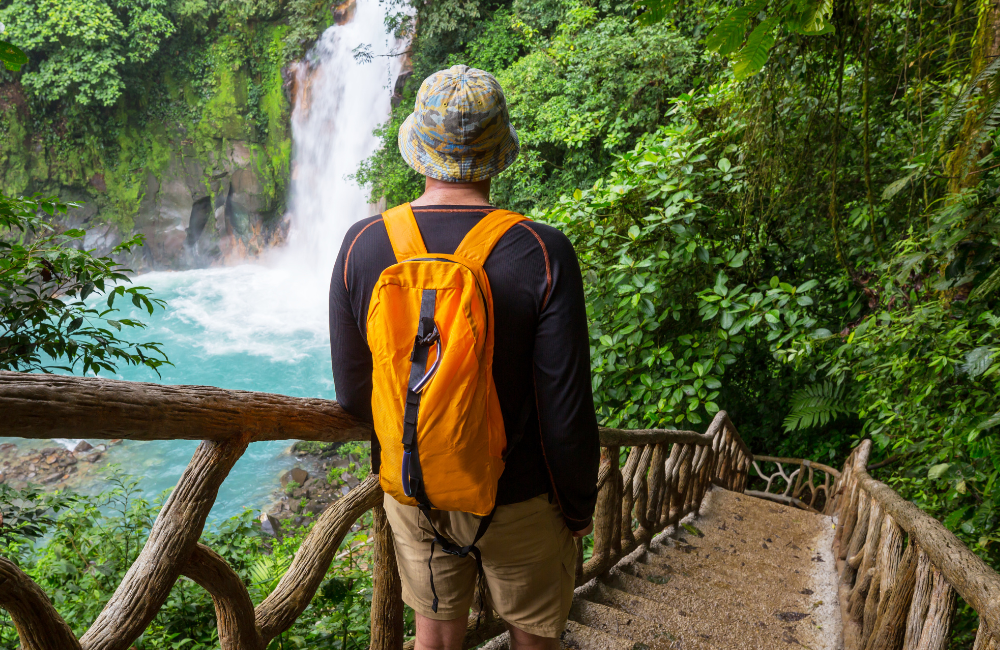
Additional Clothing Accessories
Here are some additional clothing accessories to consider when hiking in a rainforest:
- Wide-Brimmed Hat with Chin Strap: Keeps drips away from my face and offers sun protection when the canopy thins.
- Buff or Bandana: Multipurpose: wicking sweat, covering my neck, and can be soaked in cold water for quick relief.
- Change of Clothes in Waterproof Bags: I always stash a fresh T-shirt and underwear in a roll-top dry sack at the top of my pack, so I have something dry if I get caught in a deluge or have to wade through swollen streams.
Choosing the Right Rainforest Hiking Footwear
Now, it’s time to talk about the boots.
Sturdy, Waterproof Hiking Boots
In my opinion, a pair of mid-height waterproof hiking boots is indispensable.
I prefer boots with a breathable membrane (think Gore-Tex or equivalent) so my feet don’t feel like they’re stewing in their own moisture.
Deep lugs and good ankle support help on steep, muddy slopes.
In the Amazon, I learned that rubber boots (wellies) can let in more water than you’d expect. They’re heavy, and once water enters, it sits. Instead, choose a boot that keeps out splashes but still lets moisture escape.
My pro tip: Check out this guide on the best hiking boots if you’re feeling lost.
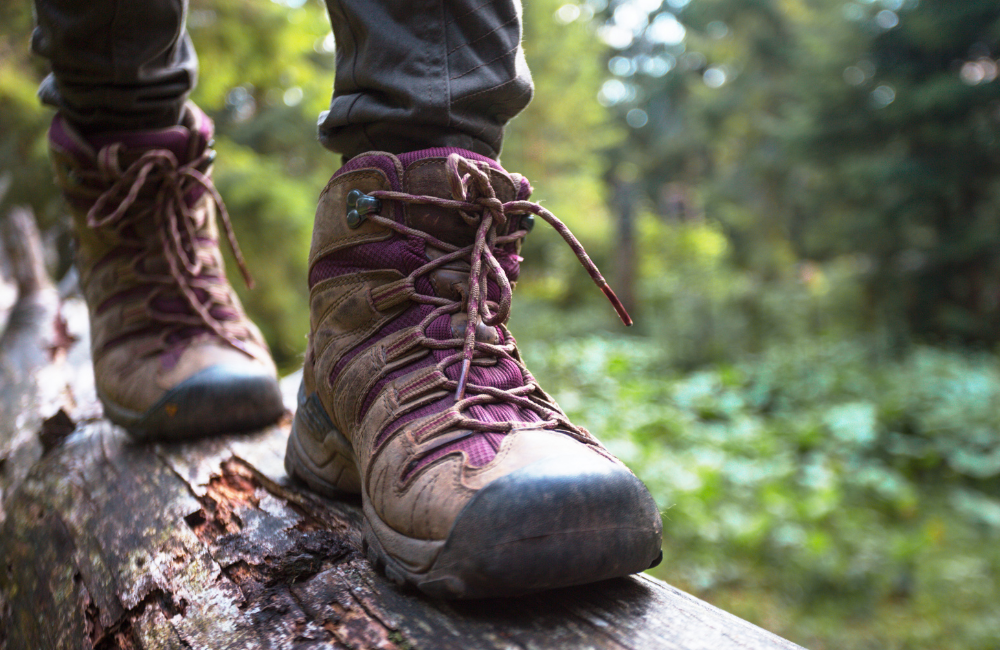
Quick-Dry Hiking Socks
I always carry multiple pairs of quick-dry socks made from merino blends. Socks that wick moisture and reduce friction help prevent blisters, even when paired with damp boots.
My strategy is to change my hiking socks at lunch if the morning’s humidity or river crossings have soaked my feet.
Some hikers swear by chemical soak treatments to repel leeches. If you’re trekking in leech territory, consider socks with tighter weaves or wearing lightweight leech-proof socks under your hiking socks. I have yet to try this.
Gaiters and Water Shoes
- Gaiters: Low-height gaiters (around 6–8 inches) keep twigs, mud, and tiny leeches from crawling into my boots. They’re lightweight, and I slip them on before dewy or muddy sections.
- Water Shoes or Sandals: For river crossings and times when boots trap too much water, I bring a pair of lightweight water sandals with good grip. On one trip to Borneo, my boots filled instantly during a deep stream crossing; switching to water shoes for the remainder of the day kept my feet more comfortable and reduced blister risk.
With that sorted, let's move on.

Backpacks, Dry Bags & Storage Solutions
Now that we’ve got the clothing sorted, let’s talk about the best type of backpacks and storage solutions when hiking the rainforest.
Daypack Features for Rainforest Trekking
My go-to daypack is 25–30 L and includes:
- Dedicated Rain Cover or Waterproof Fabric: I’ve used packs made from waterproof material, but a separate rain cover works just as well and costs less.
- Multiple Compartments: A top lid pocket for snacks, a front pocket for quick-access items (map, compass, insect repellent), and side mesh pockets for water bottles.
- Hip Belt with Pouches: Handy for stashing energy bars or a phone for quick photos.
When it’s raining, I slip my pack under my jacket tail before adjusting the zip to prevent water seeping in as I zip up.
Be sure to check out my favourite hiking daypacks if you’re looking for a great daypack.
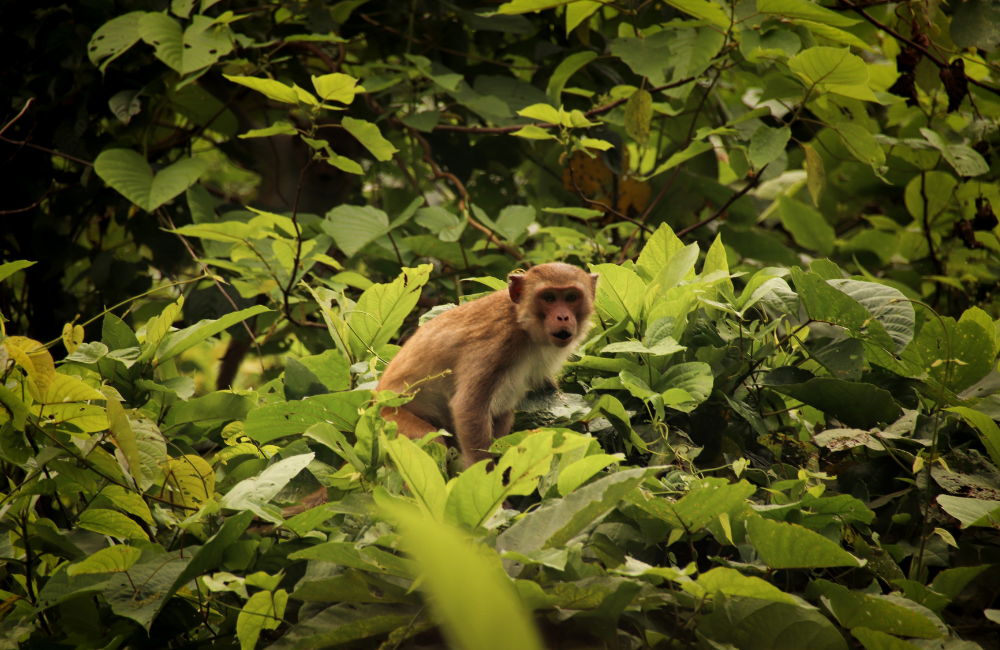
Dry Bags and Zip-Lock Protection
To keep electronics, spare clothes, and sensitive items bone-dry, I pack:
- Roll-Top Dry Bags (5 L and 10 L): I assign one for electronics (camera, phone, power bank) and one for clothes. If a bag gets punctured, its contents remain protected within a smaller zip-lock bag inside.
- Zip-Lock Bags: Small snacks, extra batteries, and first aid blister plasters go in zip-lock bags. This is my pro tip against moisture.
On a two-week Panama expedition, the river camp we stayed at experienced torrential overnight floods. Had I not waterproofed my kit inside multiple layers of dry sacks, I’d have woken to soggy cameras and soaked spare shirts. Nope!
Packing Cubes and Compression Sacks
Although packing cubes are more common on longer trips, I find compression sacks invaluable. They let me flatten down my sleeping kit, saving space for essential clothing.
If rain isn’t guaranteed, I use lighter, non-waterproof cubes; but for high-humidity circuits, it’s wise to use waterproof compression sacks throughout.
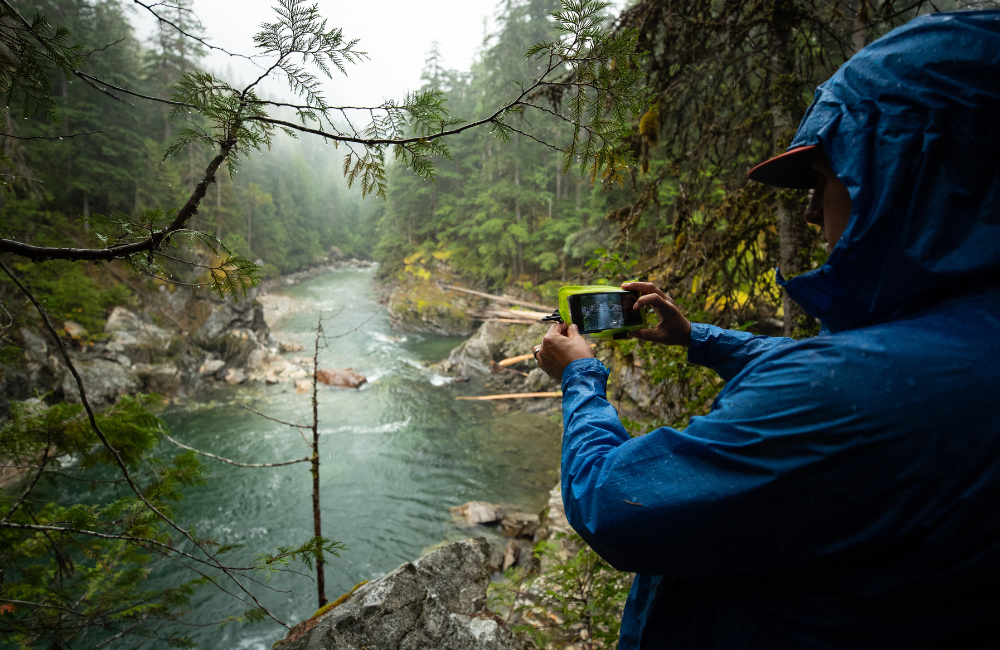
Navigation, Electronics, and Communication
Now, what about electronics? I’m a geek and love my tech, so here’s what I suggest.
Map, Compass & GPS Device
A GPS app on my phone is handy, but in a rainforest, battery life drains fast, and signal is often non-existent. I always carry:
- Topographic Map and Compass: Practice using them before your trip; GPS units and smartphones can fail.
- Dedicated Handheld GPS (with Replaceable Batteries): I pack two extra sets of alkaline or lithium batteries.
Headlamp and Spare Batteries
Dense tree cover makes dusk fall quickly. I keep a waterproof headlamp in my hip-belt pocket and carry at least two extra sets of batteries.
In one torrential Amazon downpour, we arrived at our camp pitch after sunset. I wouldn’t have found my tent pegs in the mud without a bright headlamp.
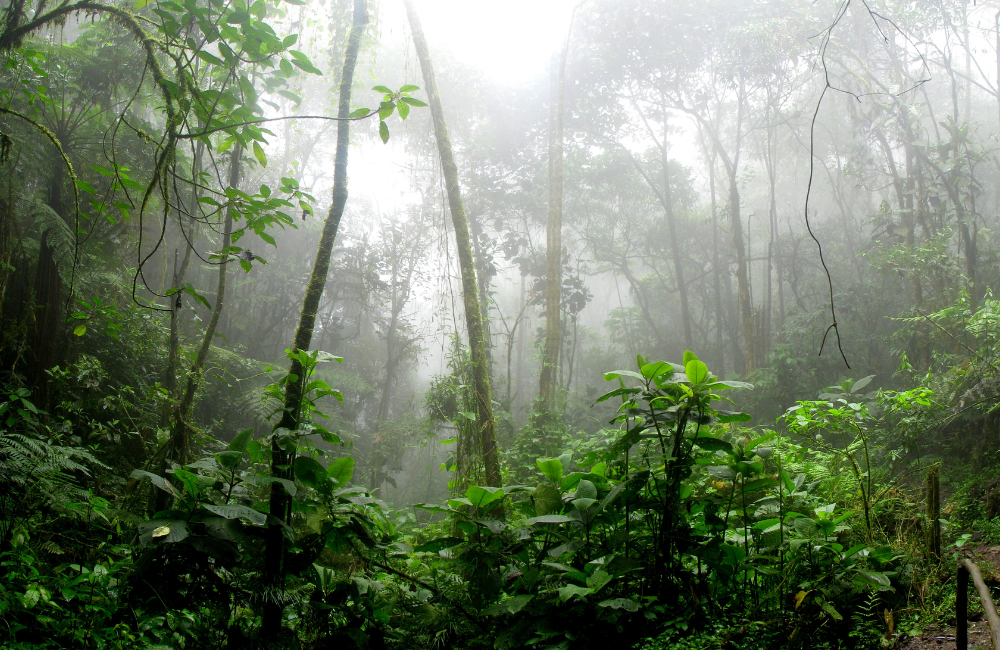
Camera, Phone, and Power Banks
Rainforest photography is addictive: sunrise shafts through mist, vibrant birds, and iridescent frogs. To capture these moments:
- Waterproof Phone Case or Dry Pouch: I clip mine to the outside of my daypack for easy access.
- Mirrorless Camera with Weather-Sealed Lens: I own a compact hiking camera that fits into a padded dry bag.
- Portable Power Bank (10 000 mAh or Higher): My priority is balancing capacity and weight; I’ve found that carrying two smaller 6 000 mAh units is more manageable than one bulky power brick.
Emergency Locator (Satellite Messenger)
When you’re hours from the nearest ranger station, a satellite messenger like Garmin inReach can be a lifesaver.
I’ve rented one for remote forays into the Guyanese rainforest, and it gives my emergency contacts peace of mind. Even if I drop it in a river, SMS and SOS functions still work (though battery life suffers). Always test the unit before departing to confirm it’s transmitting correctly.
Got that? Great. Let’s move on to shelter and sleep systems.
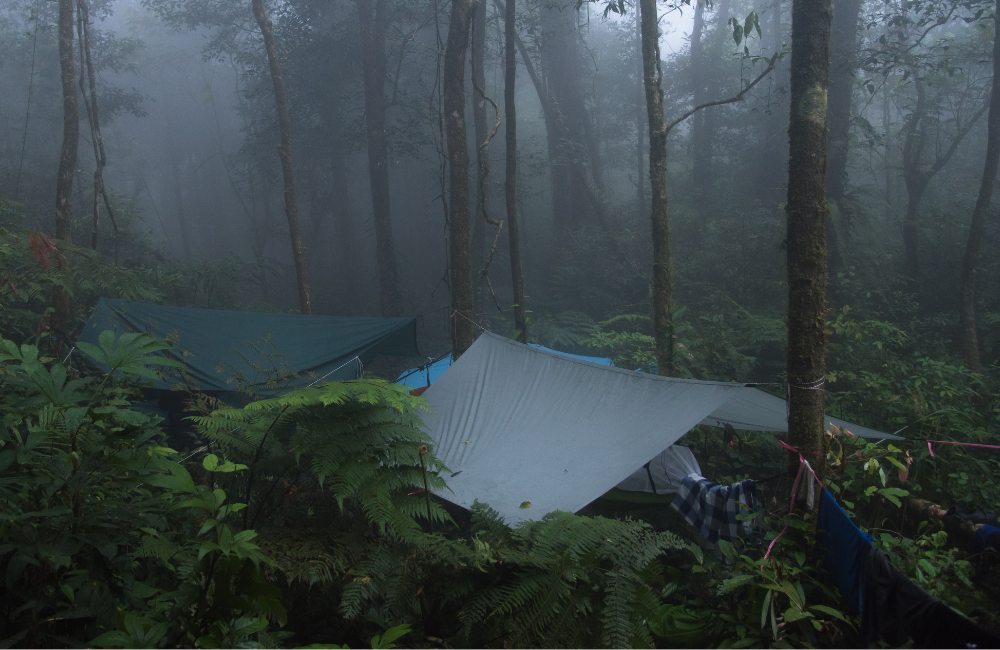
Shelter and Sleep Systems
Here’s what I recommend you include in your rainforest hiking packing list.
Tent or Hammock with Mosquito Net
Choosing between a good ultralight tent and a hammock comes down to comfort and insect protection. I alternate based on local conditions:
- Lightweight Tarp Tent: Offers a roomy interior and better ground insulation when the forest floor is damp or crawling with insects. I favour a tent with a fully enclosed mesh canopy and a separate rainfly.
- Hammock with Built-In Mosquito Net: Ideal for flat, well-drained campsites. Elevated off the ground, it keeps me away from ants, snakes, and soggy leaf litter. I pair it with a lightweight tarp pitched above to channel rain away.
No matter my choice, I never forgo a good mosquito net. Trust me. I’ve woken up multiple times covered in itchy bites despite a sturdy bug jacket.
Sleeping Bag or Sleep Liner
Nights in tropical forests can dip into the mid-teens Celsius. Without the right sleeping bag, you’re going to be cold, and uncomfortable. My pack usually contains:
- Lightweight Synthetic Sleeping Bag (Rated 10 °C to 15 °C): Synthetic fill stays warm even when damp, a must in humid conditions.
- Silk or Polyester Liner: Adds an extra degree or two of warmth, and is far easier to wash than a full sleeping bag.
Having a synthetic bag and liner keeps me from shivering in the early hours, despite water pooling beneath me.
Ground Pad vs. Hammock Underquilt
- R-Value Insulated Ground Pad: If I’ve chosen a tent, I carry a lightweight foam pad with an R-value of at least 3.0. That’s enough to keep the ground chill at bay.
- Underquilt for Hammock: When I suspend myself above forest detritus, I wrap a specialised underquilt beneath my hammock. It’s an added weight but critical when temperatures drop.
We're almost done with this rainforest hiking packing list. Next up: health and safety.
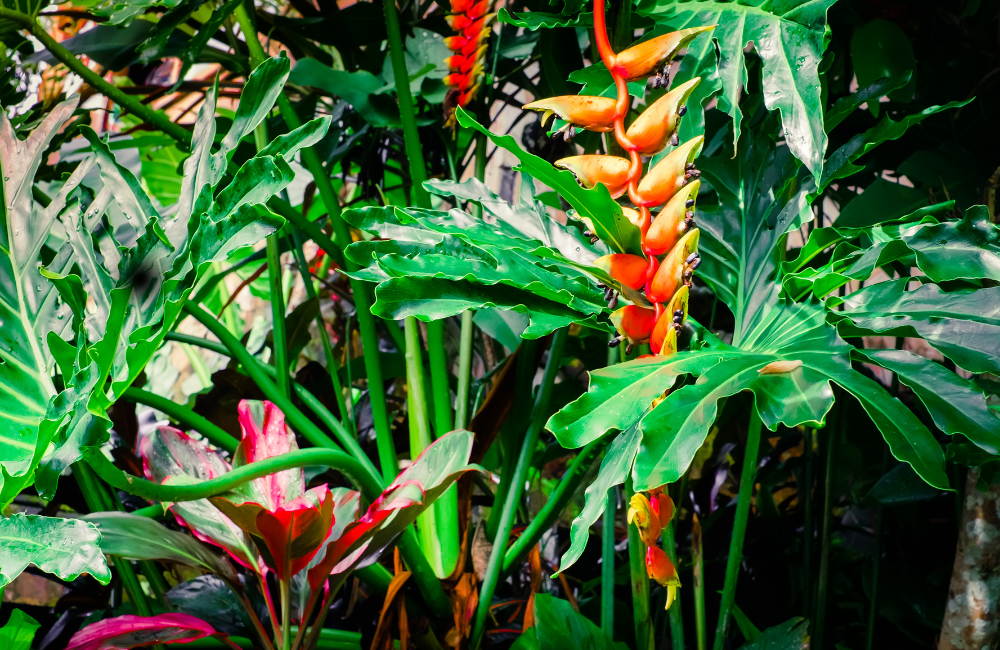
Health, Safety and First Aid Essentials
Naturally, you don’t want to skip packing some essential first aid and safety gear. Here’s what I do.
Comprehensive First Aid Kit
A generic first aid kit is a solid foundation, but for rainforest-specific challenges, I augment it with:
- Anti-Venom Information and Portable Kit: Not all jungles require carrying anti-venom, but having a reference card for local snake species and recommended treatment protocols is wise. Your guide will often carry this. Just check.
- Sting Relief (Calamine Lotion Wipes or Hydrocortisone Cream): Insect bites can swell quickly; I carry small tubes of anti-itch cream.
- Diarrhoea Medication and Rehydration Salts: Gastrointestinal issues are common when water sources are questionable.
- Antibiotic Ointment and Waterproof Plasters: Even a small cut can become infected within hours in a warm, damp environment.
- Tweezers and Safety Pins: For splinters, ticks, and makeshift bandaging.
During a Malayan rainforest hike, one of our group stepped on a rusty nail. We were three hours from the nearest clinic. Having tetanus boosters up to date and antibiotic ointment meant we managed the wound safely until evacuation.
Insect Protection
My rainforest insect arsenal includes:
- DEET or Picaridin Insect Repellent (30–50% Concentration): I apply it liberally to exposed skin and spray clothing lightly.
- Permethrin-Treated Clothing: I pre-treat my socks and trousers with permethrin before the trip. It kills ticks and insects on contact for up to six weeks.
- Portable Mosquito Net (for Carried Hammock, Campsite Sit-Downs): Sometimes I hang a small net over my hammock or seat at camp to read or sort gear without constant mosquito buzz.
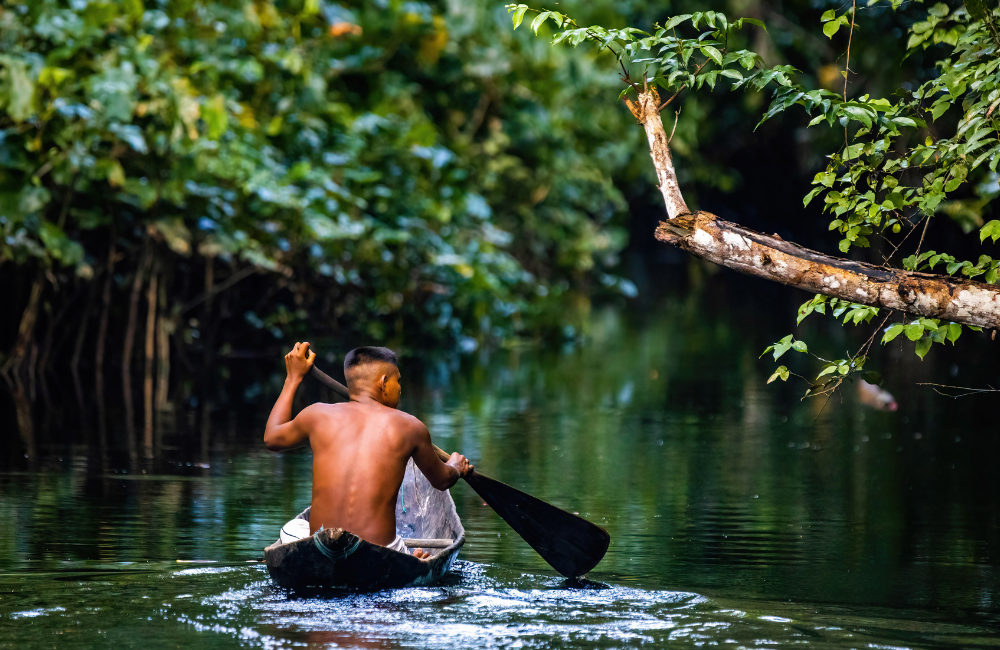
Water Purification and Hydration
While many streams look pristine, even clear water can harbour giardia and other parasites. I rely on a dual approach:
- Filter Pump: I carry a lightweight pump filter with a 0.2 micron rating that removes bacteria and protozoa. It’s faster than tablets and tastes better.
- Purification Tablets (Backup): In case my pump clogs, I always pack halogen tablets. They take 30 minutes to work, but they’re a lightweight fail-safe.
- Collapsible Water Bottle and Hydration Bladder (2 L Total): I use a 1 L hydration bladder for on-the-go sipping and a 750 mL bottle for filtering. On hot days, I refill at least twice and add electrolyte powder for extra hydration.
Sun Protection and Heat Management
Even under canopy, UV rays penetrate. I carry:
- Broad-Spectrum, Reef-Safe Sunscreen (SPF 30+): Essential for exposed areas (most often your cheeks, nose and forearms) especially when near rivers or wetlands where glare is intense.
- Lightweight Sun Sleeves or Arm Guards: Provide coverage without adding bulk. A friend suffered a nasty sunburn on her wrist and forearms during a white-water kayaking leg; she now swears by sleeves.
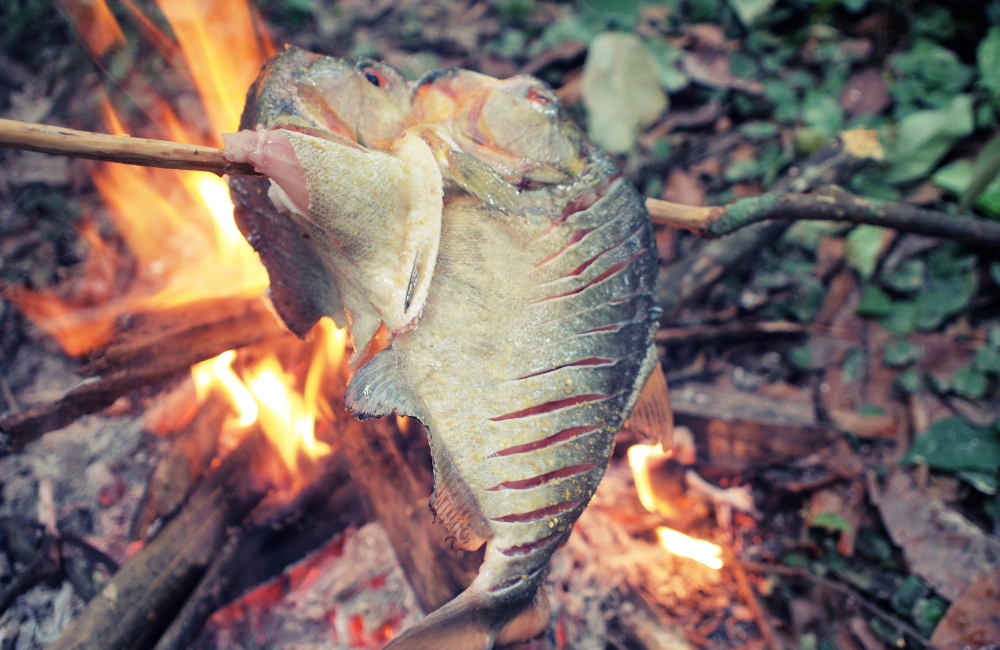
Food, Snacks and Cooking in the Jungle
As a diabetic, snacking and eating healthy is crucial. Here’s how I handle it:
High-Energy Trail Snacks
Rainforest hiking can burn more calories than you’d expect. Who knew lugging heavy gear through dense vegetation could be exhausting? My go-to snacks include:
- Nuts and Mixed Seeds: Almonds, cashews, pumpkin seed. It’s calorific fuel that’s easy to nibble while walking.
- Dehydrated Fruits and Trail Mix Bars: Mango strips, banana chips, and nut–fruit bars give quick energy boosts.
- Electrolyte Tablets or Powder: I drop these into my water bottles in the late afternoon to stave off cramping.
When hunger or thirst strikes unexpectedly during a river crossing, having my snacks easily accessible has saved the day more than once.
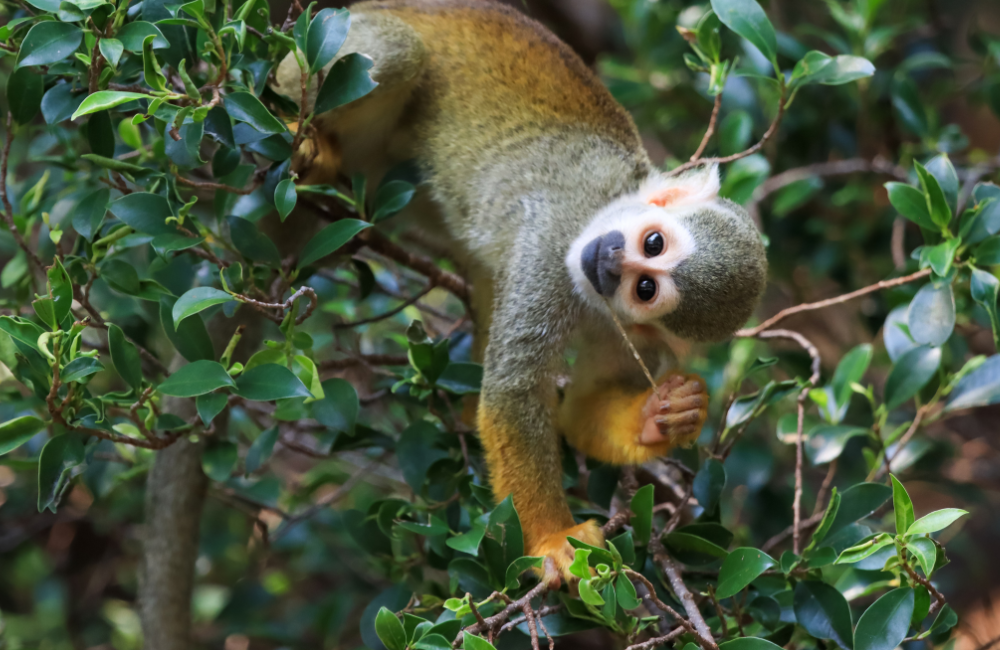
Lightweight Stove and Cookware (Optional)
For multi-day treks where resupply isn’t possible, I bring:
- Compact Canister Stove with Windshield: A great camping stove enables quick boiling of water for dehydrated meals. In rainforest winds, a simple stove shield is invaluable.
- Titanium Pot (0.6 L to 0.9 L): Lightweight and durable. I only need to boil water for freeze-dried meals or instant noodles.
- Utensils and Small Sponge: A lightweight spork and biodegradable soap let me clean up with minimal fuss (and stay eco-friendly).
However, in some protected reserves, open flames aren’t permitted. Always check local regulations before packing a stove.
Food Storage: Bear Bags and Wildlife-Proof Containers
Even in the tropics, curious critters can sniff out human food. I secure all edibles by:
- Hanging Food Bags (Where Appropriate): Hang your food at least 3 m off the ground to prevent curious coatis from nosing through your dinner.
- Bear-Resistant Containers or Lockable Dry Sacks: In parts of Central America, agoutis and howler monkeys can be surprisingly persistent. A container with a secure latch will keep your provisions intact until morning.
Let's wrap up this guide on what to pack when rainforest hiking.
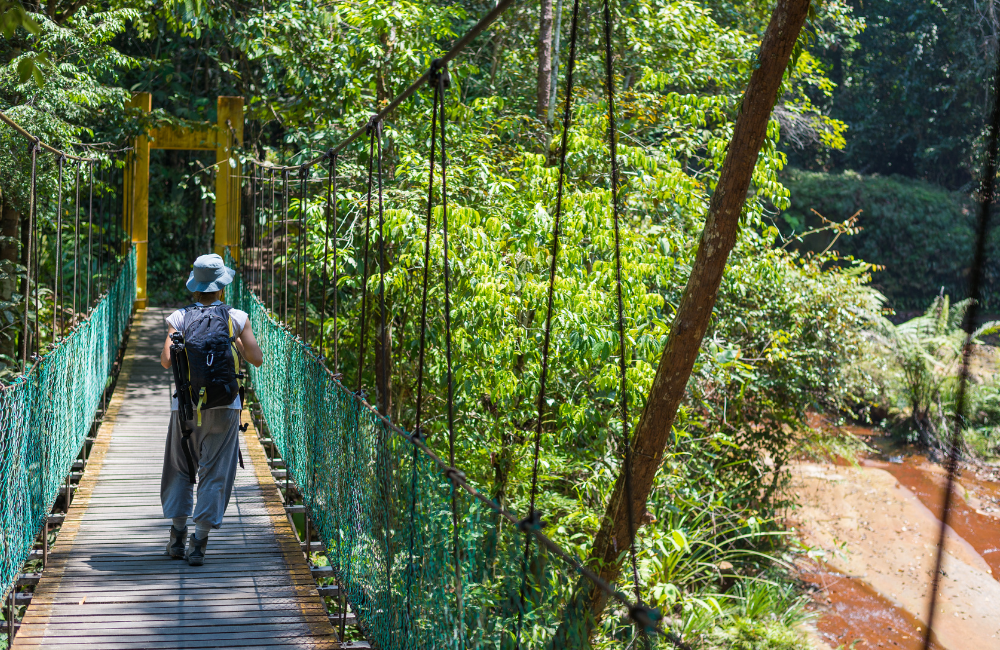
Miscellaneous Rainforest Hiking Essentials
Let’s wrap up my packing list with a few odds and ends.
Trekking Poles for Stability
I never set out without adjustable trekking poles. They’re vital for:
- Muddy, Slippery Terrain: Poles distribute weight and reduce the risk of falls.
- River Crossings: I test water depth and current speed with a pole before each step.
- Reducing Knee Strain: Carrying heavy rain gear and a packed tent can weigh ankles and knees down; poles offset some pressure.
Not sure what trekking poles will work the best for you? Here’s a handy guide on the top trekking poles. You can also find tonnes of great options here.
Multi-Tool or Knife
A compact multi-tool with pliers, knife blade, and screwdriver is a lifesaver if gear fails. I’ve used mine to:
- Replace broken tent zippers.
- Trim a snagged rope.
- Open tins of sardines for a protein boost at camp.
Here’s Mark’s favourite camping knife. It sure is a winner, even though i have yet to use it.
Toiletries and Personal Hygiene
Maintaining hygiene in a rainforest is challenging, but small items can make a big difference:
- Biodegradable Soap and Shampoo Bar: For sponge baths. Remember to rinse your water at least 50 m from streams to minimise impact.
- Hand Sanitiser: Especially before meals; waterborne germs are rampant.
- Quick-Dry Microfibre Towel: Compact, absorbent, and dries fast, even when hung under a tarp.
I also carry toilet paper in a zip-lock bag and a small trowel for digging catholes. In some regions, a “wag bag” system is mandatory. You’ll have to check local regulations well in advance.
Fire-Starting Kit
Even in humid environments, a small fire can boost morale and keep insects at bay. My kit includes:
- Waterproof Matches and Lighter: Kept in separate dry bags.
- Tinder (Cotton Balls Coated with Petroleum Jelly): Burns steadily even when damp. I’ve used it to ignite kindling under heavy rain.
- Compact Stove (as Noted Above): When open flames are prohibited, a stove ensures hot meals and boiled water.
And that's a wrap! Ready for my final thoughts? Let's roll.
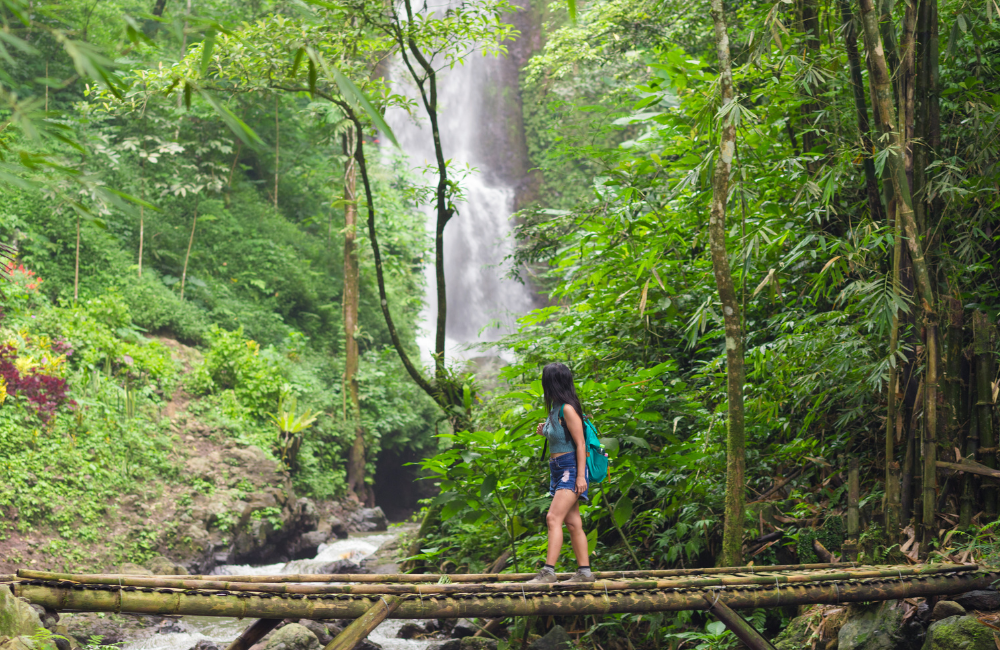
My Final Thoughts
And there you have it: Rainforest hiking is the ultimate test of resilience, adaptability, and appreciation for nature’s wonders.
The trick lies in anticipating the constant presence of water, whether from torrential downpours, boggy trails, or river crossings, and packing gear that embraces moisture instead of fighting it.
With the right clothing, footwear, storage solutions, and safety kit, you’ll be able to focus on the thrill of spotting a jaguar paw print or hearing howler monkeys at dawn.
Happy trekking!

